Paul Thompson's Research Publications
Detecting Disease-Specific Patterns of Brain Structure using
Cortical Pattern Matching and a Population-Based Probabilistic Brain Atlas
Paul Thompson PhD, Michael S. Mega MD PhD, Christine Vidal,
Judith Rapoport MD, Arthur W. Toga PhD
Laboratory of Neuro Imaging, Division of Brain Mapping, and
Alzheimer's Disease Center
Dept. of Neurology, UCLA School of Medicine, Los Angeles, CA
Child Psychiatry Branch, National Institute of Mental Health, Bethesda, MD
Proc. 17th International Conference on Information Processing in Medical Imaging (IPMI2001),
Davis, CA, USA, June 18-22, 2001, pp. 488-501.
[Full Article:
Without Figures (.pdf 60K);
With All Figures in Color, as in Proceedings (.pdf 401K);
With All Figures in Grayscale (.ps.gz 1.3M);
With All Figures in Color (.ps.gz 3.6M);
All Figures are below]
[Click on each Image for Larger Version]
|
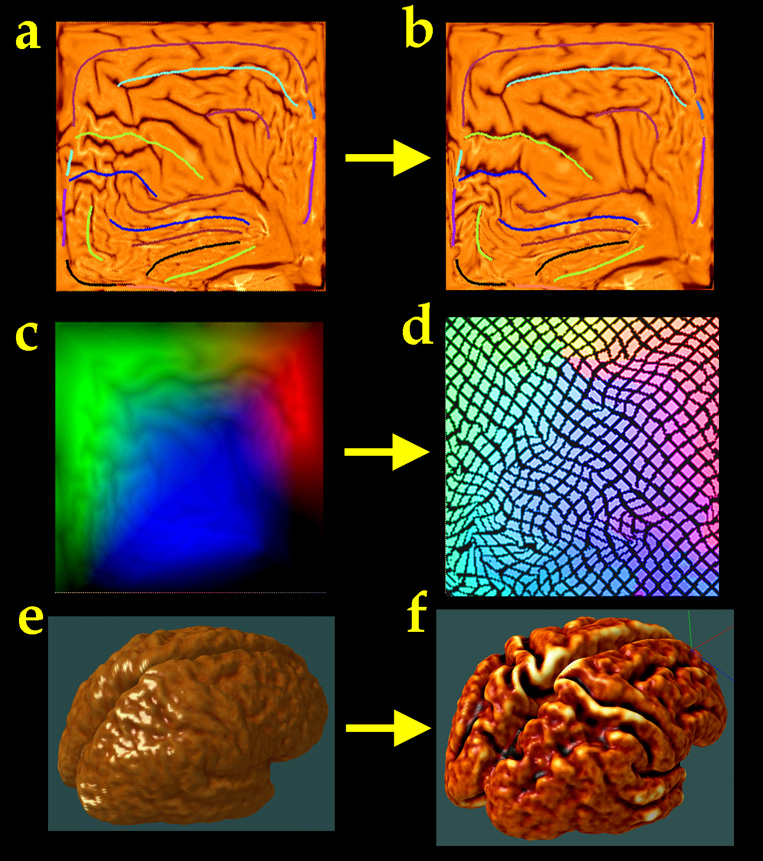
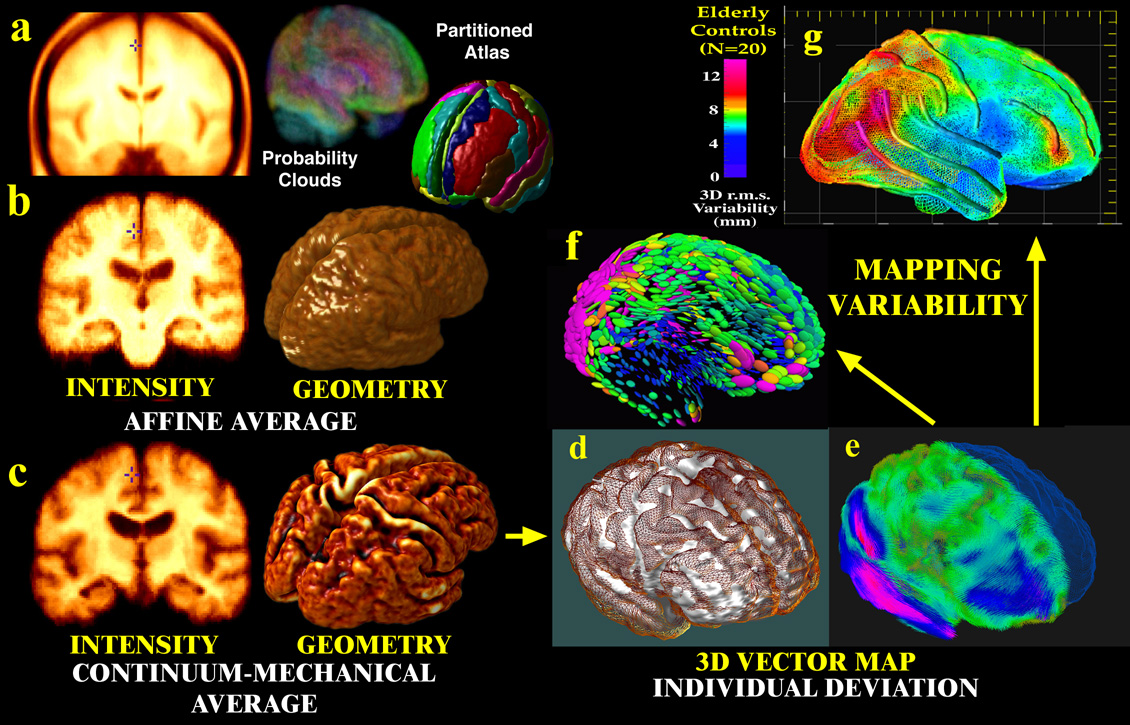
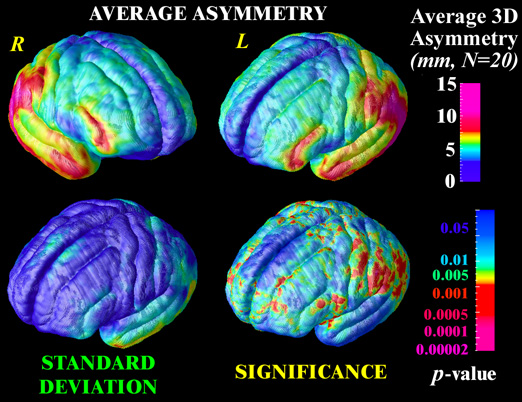
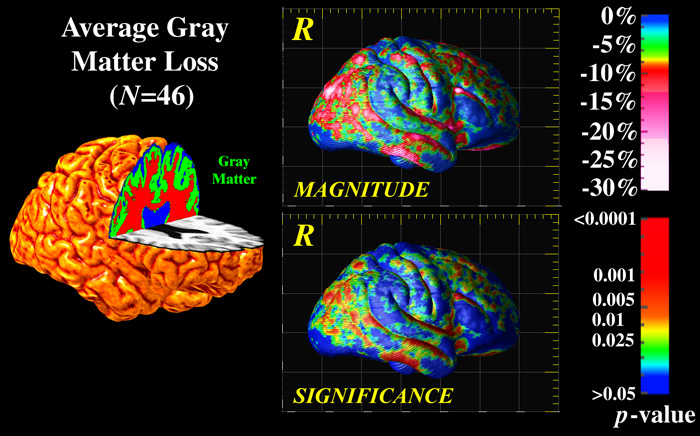
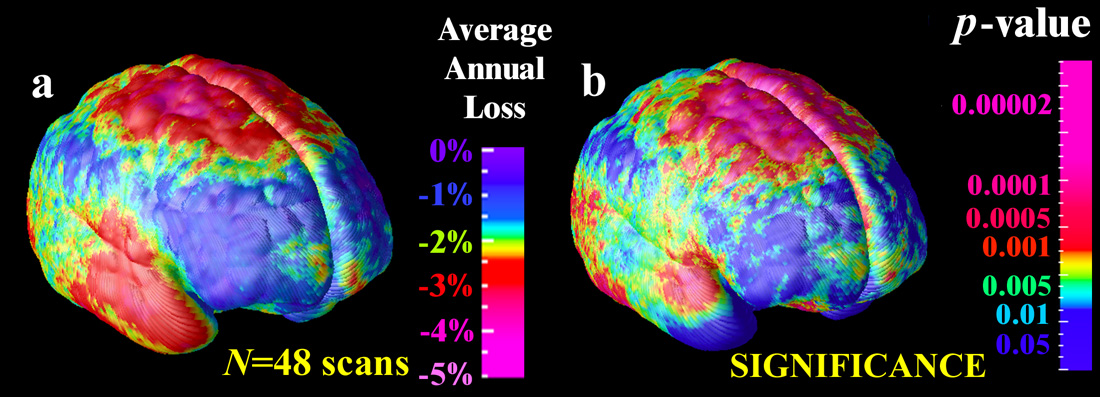
|
ABSTRACT
|
The rapid creation of comprehensive brain image databases mandates the
development of mathematical algorithms to uncover disease-specific patterns
of brain structure and function in human populations. We describe our construction
of probabilistic atlases that store detailed information on how the brain varies
across age and gender, across time, in health and disease, and in large human
populations. Specifically, we introduce a mathematical framework based on covariant
partial differential equations (PDEs), pull-backs of mappings under harmonic flows,
and high-dimensional random tensor fields to encode variations in cortical patterning,
asymmetry and tissue distribution in a population-based brain image database (N=94 scans).
We use this information to detect disease-specific abnormalities in Alzheimer's disease and
schizophrenia, including dynamic changes over time. Illustrative examples are chosen to show
how group patterns of cortical organization, asymmetry, and disease-specific trends can be
resolved that are not apparent in individual brain images. Finally, we create
four-dimensional (4D) maps that store probabilistic information on the dynamics
of brain change in development and disease. Digital atlases that generate these
maps show considerable promise in identifying general patterns of structural and
functional variation in diseased populations, and revealing how these features
depend on demographic, genetic, clinical and therapeutic parameters.
|
Related Publications
(back to main list)
Contact Information
Mail:
Paul Thompson, Ph.D.
Assistant Professor of Neurology
UCLA Lab of Neuro-Imaging and Brain Mapping Division
Dept. Neurology and Brain Research Institute
4238 Reed Neurology, UCLA Medical Center
710 Westwood Plaza
Westwood, Los Angeles CA 90095-1769, USA.
E-mail:
thompson@loni.ucla.edu
Tel: (310)206-2101
Fax: (310)206-5518




